-
 bitcoin
bitcoin $108221.513755 USD
-0.10% -
 ethereum
ethereum $3817.049350 USD
-1.16% -
 tether
tether $1.000184 USD
-0.03% -
 bnb
bnb $1081.373706 USD
1.55% -
 xrp
xrp $2.367284 USD
-2.30% -
 solana
solana $180.847708 USD
-3.07% -
 usd-coin
usd-coin $0.999936 USD
0.00% -
 tron
tron $0.322230 USD
-0.06% -
 dogecoin
dogecoin $0.190590 USD
-1.92% -
 cardano
cardano $0.626657 USD
-2.42% -
 hyperliquid
hyperliquid $37.280123 USD
6.15% -
 chainlink
chainlink $17.222315 USD
-2.46% -
 ethena-usde
ethena-usde $0.999312 USD
-0.03% -
 stellar
stellar $0.309699 USD
-0.98% -
 bitcoin-cash
bitcoin-cash $475.445788 USD
-1.02%
How do you customize WMA indicator settings for your trading style?
The Weighted Moving Average (WMA) prioritizes recent prices, offering crypto traders a responsive tool to catch trends and reversals faster than SMA.
Oct 22, 2025 at 09:18 pm
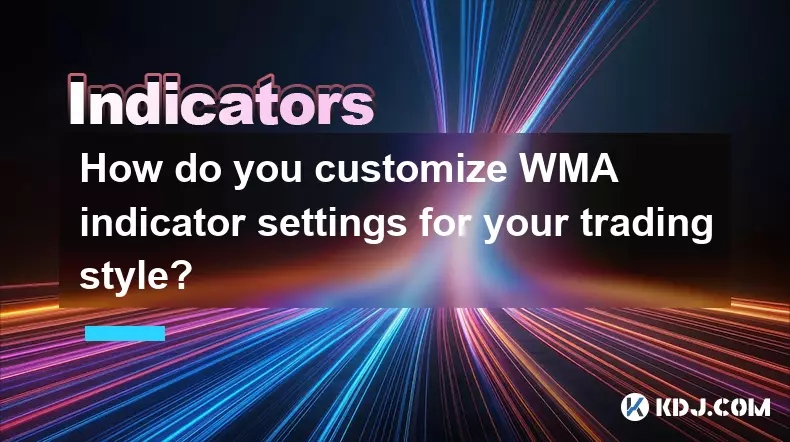
Understanding the Basics of the WMA Indicator
1. The Weighted Moving Average (WMA) assigns greater importance to recent price data, making it more responsive than simple moving averages. Traders use it to identify trends and potential reversals in asset prices within the cryptocurrency markets.
2. Unlike the Simple Moving Average (SMA), which treats all data points equally, the WMA multiplies each closing price by a weighting factor based on its position in the sequence. This makes the indicator more sensitive to sudden price changes common in volatile digital asset trading.
3. In fast-moving crypto environments, this responsiveness allows traders to react quicker to momentum shifts. For instance, during sharp BTC or ETH rallies, the WMA may cross above longer-term averages sooner than SMA-based signals, offering earlier entry opportunities.
4. Customization begins with understanding how different periods affect signal frequency. A shorter WMA, such as 5 or 10 periods, reacts quickly but generates more false signals. Longer settings like 50 or 100 smooth out noise but lag behind real-time action.
5. Choosing an appropriate period depends heavily on your trading horizon—scalpers often prefer short WMAs, while swing traders lean toward medium-length configurations for balance between sensitivity and reliability.
Selecting Optimal Period Lengths Based on Strategy
1. Day traders focusing on altcoin pairs might use a 7-period WMA on 15-minute charts to capture intraday momentum. This setup aligns well with rapid price swings seen in low-cap tokens experiencing sudden volume spikes.
2. Swing traders holding positions for several days may apply a 21-period WMA on 4-hour timeframes. This duration filters out minor volatility while still providing timely trend confirmation across assets like SOL or BNB.
3. Position traders seeking long-term directional bias could combine a 50-period WMA with a 200-period version on daily charts. When the shorter WMA crosses above the longer one, it may indicate bullish accumulation phases after prolonged corrections.
4. Backtesting various lengths using historical candle data from exchanges like Binance or Bybit helps determine which combinations produce consistent results under specific market conditions such as high volatility or consolidation.
5. Some traders layer multiple WMA lines together—for example, 10, 20, and 60—to create dynamic support/resistance zones. Price bouncing off the 20-WMA during uptrends can serve as re-entry points in trending altcoins.
Integrating WMA with Volume and Other Indicators
1. Combining the WMA with on-chain volume metrics enhances signal validity. A breakout above the 14-WMA accompanied by rising trading volume on Coinbase Pro adds credibility to potential bullish continuation patterns.
2. Pairing WMA crossovers with RSI readings prevents overbought/oversold entries. If the 10-WMA crosses above the 20-WMA but RSI exceeds 70, the buy signal may be premature despite apparent momentum.
3. Using WMA alongside MACD improves trend-following accuracy. When both indicators align—such as MACD line crossing above signal line while price moves above WMA—it strengthens conviction in trade setups.
4. In ranging markets, WMAs tend to flatten, producing whipsaws. Adding Bollinger Bands helps distinguish between genuine breakouts and false moves; only trades where price clears both WMA and band boundaries are considered valid.
5. Algorithmic traders program bots to execute orders when predefined WMA thresholds are met along with minimum volume thresholds, reducing emotional interference and increasing discipline in high-frequency crypto strategies.
Frequently Asked Questions
What is the difference between WMA and EMA in crypto trading?While both emphasize recent prices, the Exponential Moving Average (EMA) applies exponentially decreasing weights, whereas WMA uses linear weighting. EMA reacts slightly faster to price changes, but WMA offers clearer visual slope interpretation on charts.
Can WMA be used effectively during sideways markets?WMA performs poorly in choppy or range-bound conditions due to frequent crossovers that lead to false signals. It works best when clear trends emerge, especially following major news events or macroeconomic shifts affecting the broader crypto sector.
How do I adjust WMA settings for different cryptocurrencies?More volatile coins like DOGE or SHIB may require longer WMA periods to reduce noise, while stable large-caps like BTC or ETH can work with shorter settings. Analyze average true range (ATR) values to gauge required smoothing levels.
Is WMA suitable for automated trading systems?Yes, WMA is widely used in algorithmic strategies because of its mathematical simplicity and clear crossover logic. Many grid bots and trend-following scripts incorporate WMA triggers combined with stop-loss rules based on volatility measures.
Disclaimer:info@kdj.com
The information provided is not trading advice. kdj.com does not assume any responsibility for any investments made based on the information provided in this article. Cryptocurrencies are highly volatile and it is highly recommended that you invest with caution after thorough research!
If you believe that the content used on this website infringes your copyright, please contact us immediately (info@kdj.com) and we will delete it promptly.
- Essex Post Office, 5p Coins, and King Charles: A Royal Mint Revelation!
- 2025-10-23 10:30:16
- Waymo's Newark Airport AV Tests: Alphabet's AI Gamble Pays Off?
- 2025-10-23 10:30:16
- King Charles 5p Coins: A Royal Flush in Your Pocket?
- 2025-10-23 10:35:18
- Solana, Crypto Advisory, and Forward Industries: A New York Minute on the Future of Finance
- 2025-10-23 08:51:22
- MAGACOIN: Ethereum Whales Dive into the Hottest Presale of 2025
- 2025-10-23 08:51:22
- Kadena's End of the Road? KDA Token Plummets Amid Project Abandonment
- 2025-10-23 08:55:34
Related knowledge
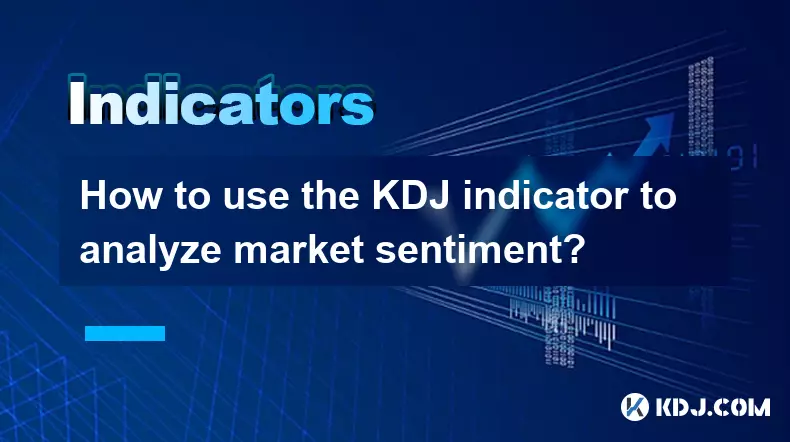
How to use the KDJ indicator to analyze market sentiment?
Oct 18,2025 at 07:18pm
Understanding the KDJ Indicator in Cryptocurrency Trading1. The KDJ indicator, also known as the Stochastic Oscillator, is a momentum-based technical ...
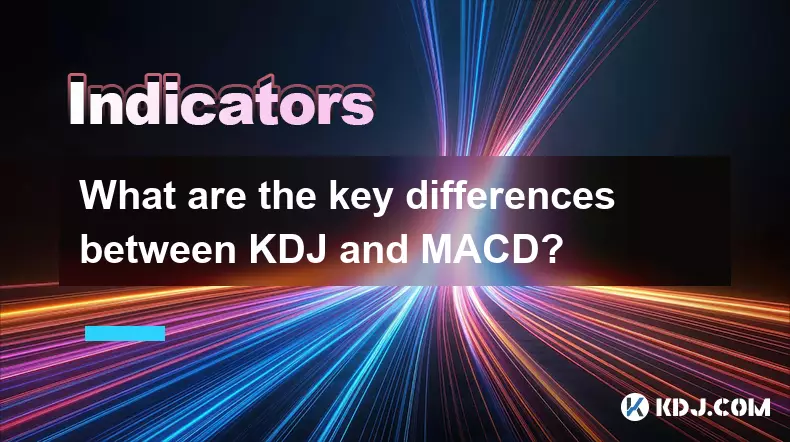
What are the key differences between KDJ and MACD?
Oct 18,2025 at 04:54am
KDJ Indicator: Core Mechanics and Usage1. The KDJ indicator is a momentum oscillator that combines the features of the Stochastic Oscillator with an a...
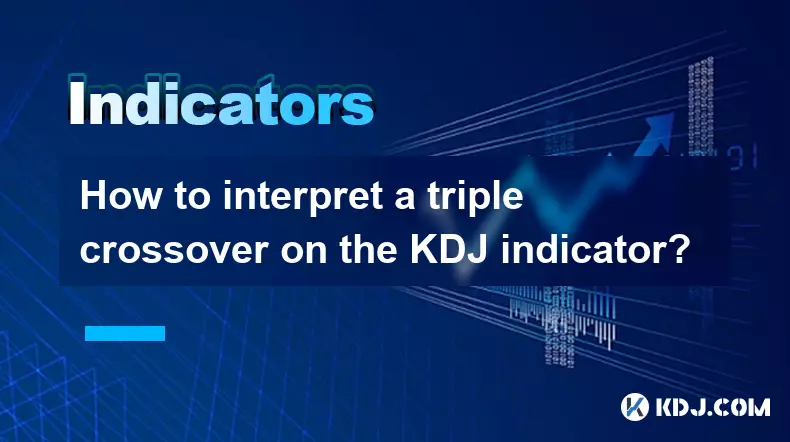
How to interpret a triple crossover on the KDJ indicator?
Oct 18,2025 at 01:54pm
Understanding the Triple Crossover in KDJ Indicator1. The KDJ indicator, a derivative of the Stochastic Oscillator, consists of three lines: K, D, and...

What's the best timeframe for the KDJ indicator?
Oct 20,2025 at 03:01pm
Understanding the KDJ Indicator in Crypto TradingThe KDJ indicator, an extension of the stochastic oscillator, is widely used in cryptocurrency tradin...
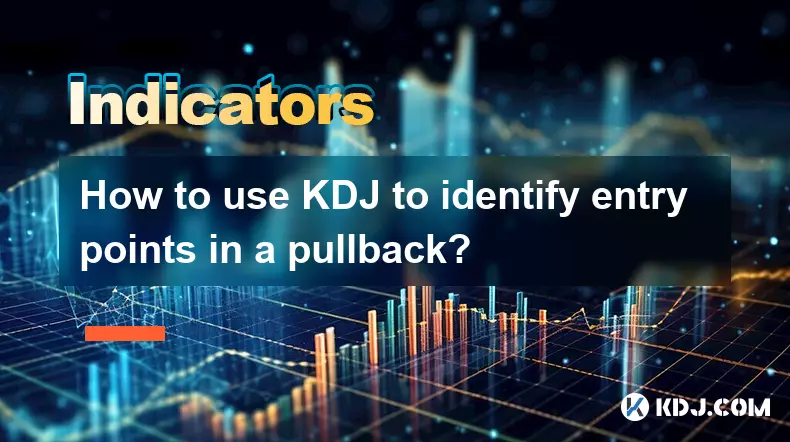
How to use KDJ to identify entry points in a pullback?
Oct 18,2025 at 09:36am
Understanding KDJ in the Context of Pullbacks1. The KDJ indicator, an extension of the stochastic oscillator, consists of three lines: %K, %D, and %J....
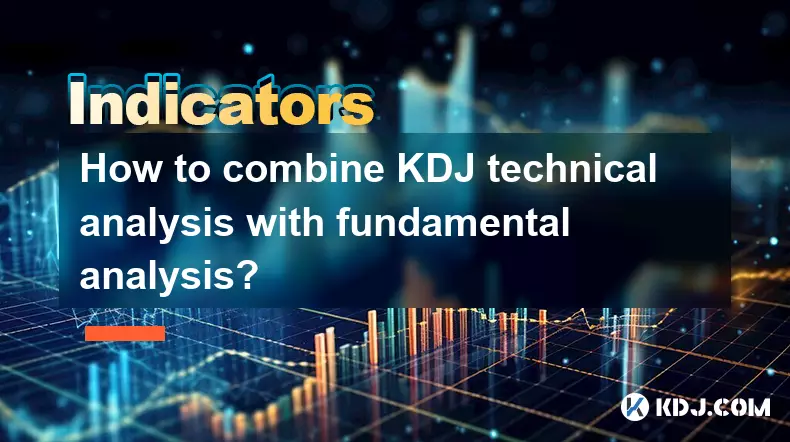
How to combine KDJ technical analysis with fundamental analysis?
Oct 20,2025 at 11:55pm
Understanding KDJ in the Context of Cryptocurrency Markets1. The KDJ indicator, originating from stochastic oscillator principles, is widely used in c...

How to use the KDJ indicator to analyze market sentiment?
Oct 18,2025 at 07:18pm
Understanding the KDJ Indicator in Cryptocurrency Trading1. The KDJ indicator, also known as the Stochastic Oscillator, is a momentum-based technical ...

What are the key differences between KDJ and MACD?
Oct 18,2025 at 04:54am
KDJ Indicator: Core Mechanics and Usage1. The KDJ indicator is a momentum oscillator that combines the features of the Stochastic Oscillator with an a...

How to interpret a triple crossover on the KDJ indicator?
Oct 18,2025 at 01:54pm
Understanding the Triple Crossover in KDJ Indicator1. The KDJ indicator, a derivative of the Stochastic Oscillator, consists of three lines: K, D, and...

What's the best timeframe for the KDJ indicator?
Oct 20,2025 at 03:01pm
Understanding the KDJ Indicator in Crypto TradingThe KDJ indicator, an extension of the stochastic oscillator, is widely used in cryptocurrency tradin...

How to use KDJ to identify entry points in a pullback?
Oct 18,2025 at 09:36am
Understanding KDJ in the Context of Pullbacks1. The KDJ indicator, an extension of the stochastic oscillator, consists of three lines: %K, %D, and %J....

How to combine KDJ technical analysis with fundamental analysis?
Oct 20,2025 at 11:55pm
Understanding KDJ in the Context of Cryptocurrency Markets1. The KDJ indicator, originating from stochastic oscillator principles, is widely used in c...
See all articles










































































